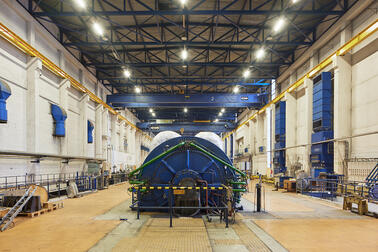
During heat consumption peaks, the production of district heating is expensive and generates more CO2 emissions than usual. The City of Helsinki and its energy company Helen Ltd are collaborating to develop solutions to this problem by means of demand response.
Many consumers and housing companies are already adjusting their use of electricity based on prices. The objective is for residents to be equally familiar with demand response in district heating in the near future.
–Heating consumers play a major role in evening out the consumption peaks of electrifying heat production. A large proportion of buildings are overheated at times, causing an increase in energy consumption. This overheating can be reduced through the digitalisation of district heating by means of optimising heating use. This will facilitate reducing not only carbon dioxide emissions, but heating costs as well, explains SVP of Heating and Cooling Timo Aaltonen from Helen.
In the pilot project launching this autumn, Helen and the City of Helsinki will experiment with heating optimisation by means of AI technology at schools and sports fields. The objective is to achieve a technological revolution that can be scaled up to cover the entire property stock of the City.
–The heating system of the buildings taking part in the pilot can be adjusted in various ways. For example, the building can be purposefully heated slightly more than usual in the morning if Helsinki is expecting extremely cold weather and a district heating consumption spike in the afternoon. This way, the building will need less district heating during the consumption spike, explains Chief Energy Specialist Kalevi Härkönen from the City of Helsinki.
If a sufficiently large number of buildings utilise similar heating optimisation solutions in the future, consumption spikes can be evened out significantly.
Carbon-neutral Helsinki and Helen in 2030
Development of the district heating system and smarter energy use will help the City and Helen achieve their shared objective – making Helsinki a carbon-neutral city by 2030. Even though district heating production has already taken considerable steps towards carbon neutrality, there is still work to do.
–Heating continues to be the greatest source of direct emissions in Helsinki. Improving the energy efficiency of buildings and evening out the consumption spikes of heating production are important steps in Helsinki’s climate work, comments Climate Director Hanna Wesslin from the City of Helsinki.
This year, Helen is aiming at a reduction of at least 60 per cent from the greenhouse gas levels of 1990, followed by a reduction of 80 per cent next year. Helen can achieve its reduction targets by switching to heat pumps, sustainably produced bio-energy and electric boilers in its district heating production.
The trials carried out at schools and sports fields are part of the Systemic Heat Shift (SHS) project of Helen and the City. The project is funded by the EU’s Net Zero Cities project, which has a hundred European cities striving towards carbon neutrality taking part.
The two-year pilot project will be gradually expanded from a few schools and sports sites to approximately 50 school properties. A similar project is also being carried out in several residential buildings of Helsinki City Housing Company Ltd (Heka).
Facility users’ satisfaction with indoor air temperatures will be monitored for the entire duration of the pilot project. The trial is not expected to affect the comfort of the indoor facilities.


